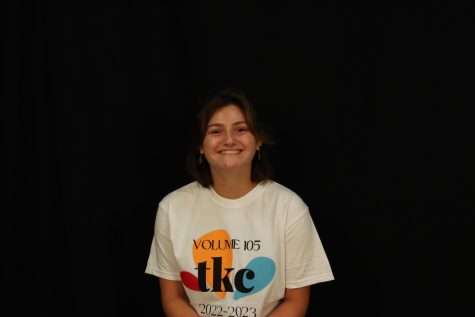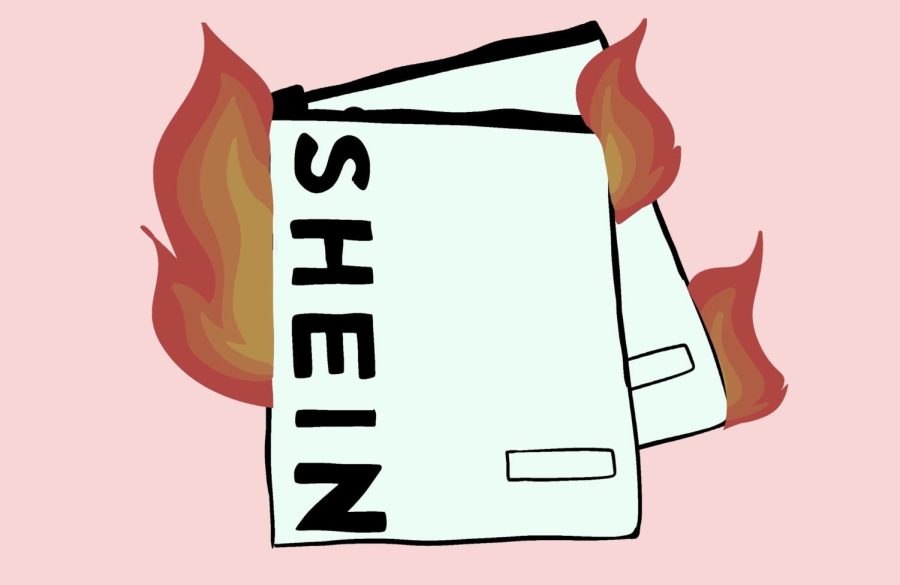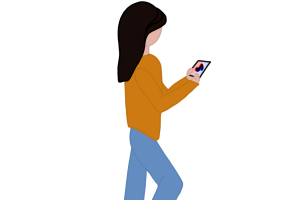TikTok and fast fashion
American fashion has always thrived off of fast trends.
“I’m in my ‘it girl’ era.” Something I overheard in a conversation just the other day. Cottage core, Dark Academia, Coconut Girl, the It Girl. These are just a few of the TikTok “aesthetics” I can name off the top of my head. But the question is, where did all this come from? Why are these aesthetics so popular? Is TikTok harmful to the fashion industry or driven by American consumerism?
Josie Sausville, junior, said she typically dresses basic. Sweatshirts and leggings embody the everyday look for most teenage girls these days. Sausville said colors are what distinguish her. She said she likes blues, purples and yellows.
“I try to wear [clothes]I feel comfortable in, it makes me feel more confident,” Sausville said. When asked if aesthetics or labels are harmful at all, Sausville said yes. Back in middle school, Sausville didn’t care how she dressed, but now she’s even noticing that her younger sister dresses older. “It makes people want to blend in.”
Everyone needs an awkward stage. TikTok changed fashion. According to Fashion United UK, “TikTok has birthed micro trends at a higher pace.” Prior to trends lasting only for two weeks then history, high-end fashion brands such as Louis Vuitton, Gucci and Chanel only had a four season cycle on the trends. Now, four seasons aren’t enough to keep up with the fashion on social media. “Companies are catering more to what’s on trends.”
Sausville said she agrees that TikTok has had, and still has, a large influence on the fashion industry through micro trends and new aesthetics. According to the The Atlantic, clothing design and trend spotting becoming more centralized than ever, the global clothing trade allows cheap garments to be made in developing countries and sold to America in mass quantities.
Hannah Pierce, senior, calls her style eccentric and vintage. She said that general color schemes alternate depending on the season, darker in winter and brighter in the summer. Pierce said she thinks that since her clothing is her own, sometimes people are confused by it because it doesn’t fit into the specific aesthetics and trends that social media is circulating. Pierce said TikTok plays a role in this mindset.
“I think TikTok negatively impacts people’s view on fashion,” Pierce said. “American fashion has always thrived off of fast trends.”
She said that she also thinks that companies like Shein and Aliexpress raise ethical concerns. Ethical Consumer finds that fast fashion is very dependent on synthetic fibers like polyester, nylon, and acrylic, which are all made of fossil fuels. This shows the environmental impacts of fast fashion.
Lee Lytle, junior, developed his style through TikTok. Lytle said that he tries to express himself through clothes, both masculine and feminine, bright and monotone. If you see Lytle in the hallways at school, you will notice that he rocks a shaved head and green hair.
“I know my fashion [is]influenced by TikTok,” Lytle said. “I feel like TikTok influences that [type of] fashion.”
Lytle shaved his head after seeing a TikTok trend, and found the courage to do so through TikTok. On the flip side, Lytle said TikTok is also harmful.
He said that he feels the pressure of conformity in online shopping and consumerism, but tries his best not to contribute through thrifting. “I felt disgusted,” Lytle said after opening up about purchasing cheaply made clothing online and learning the consequences.
Your donation will support the student journalists of Kirkwood High School. Your contribution will allow us to purchase equipment and cover our annual website hosting costs.

She/Her
Hobbies and Interests: painting, drawing, running, bee keeping, writing, skateboarding
Favorite song: Friend of The Devil- Grateful Dead
Favorite...










